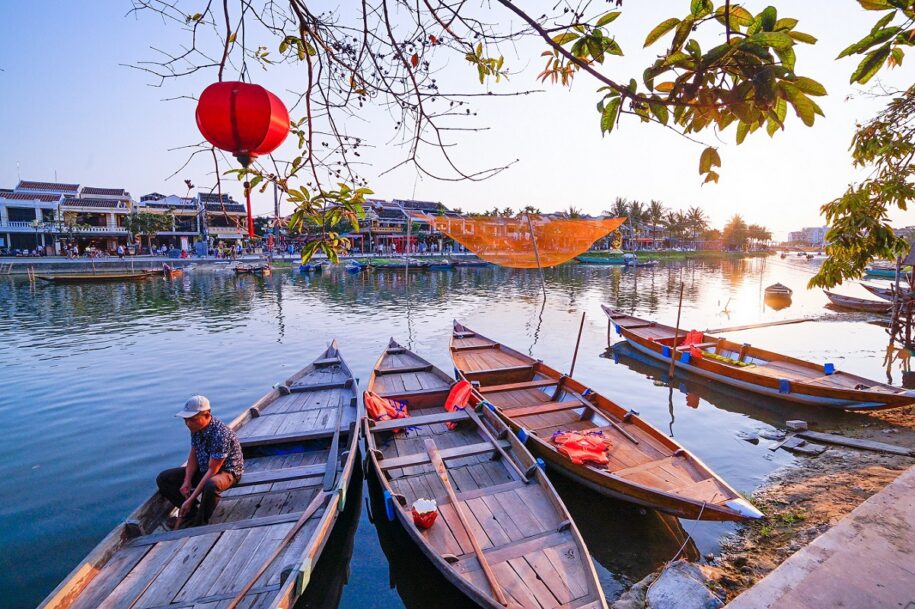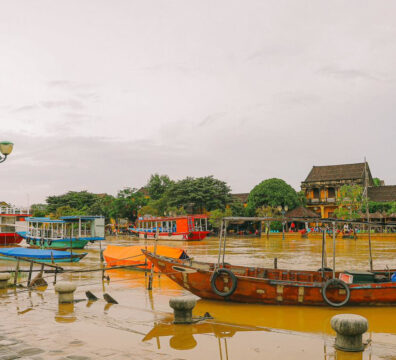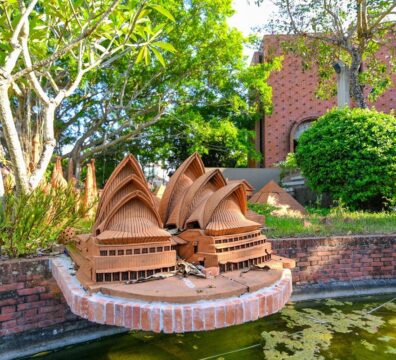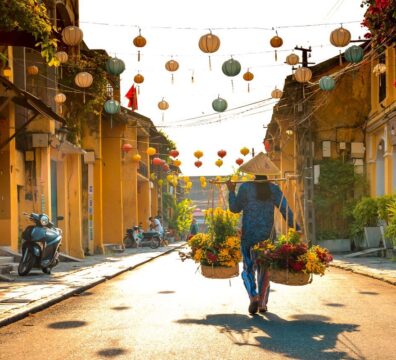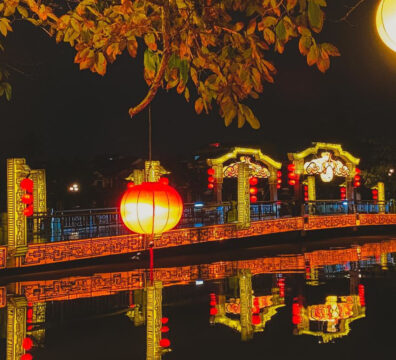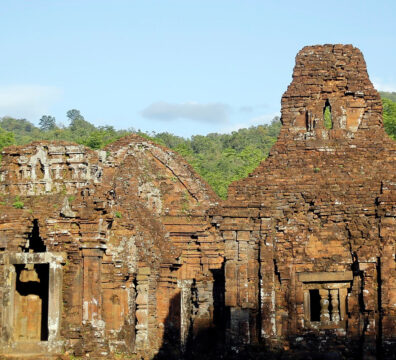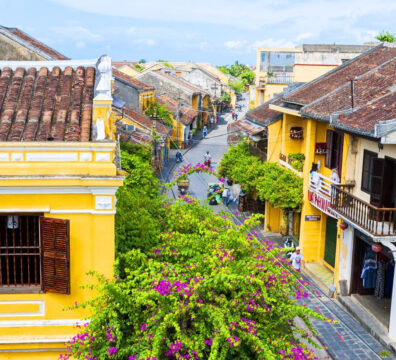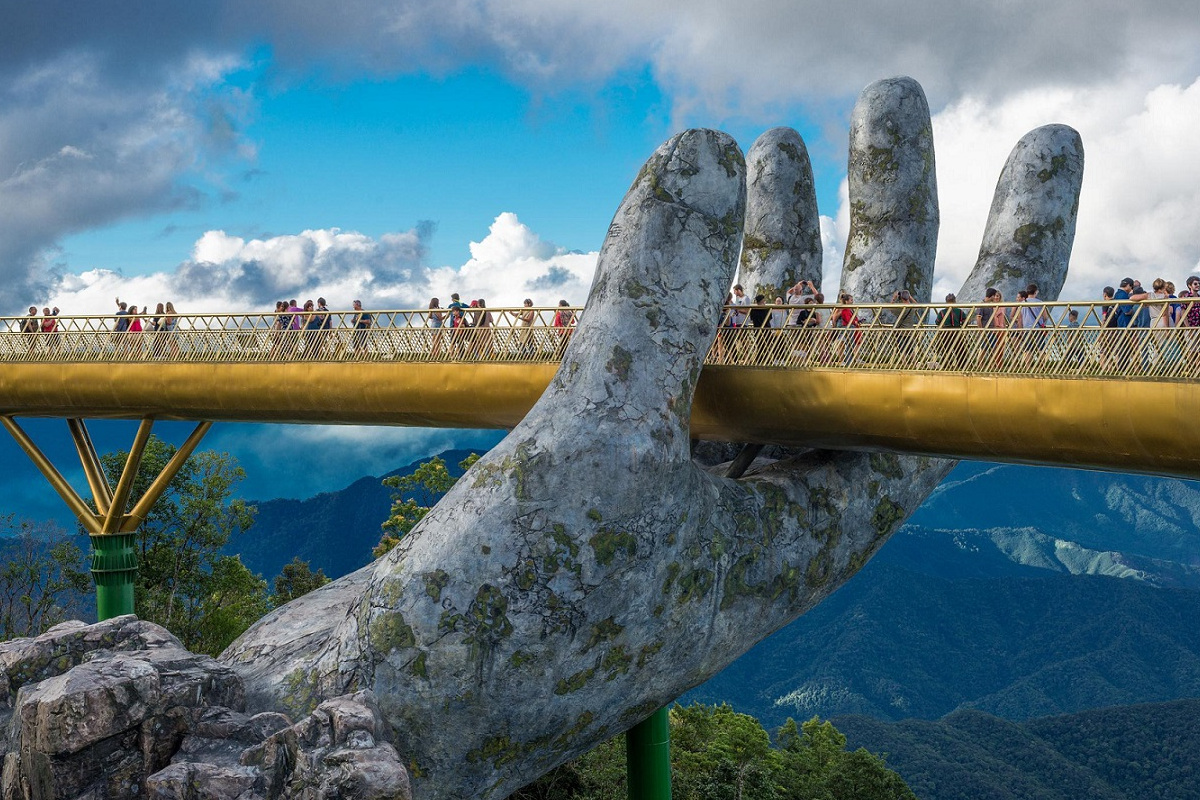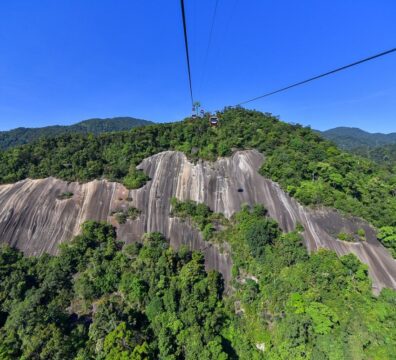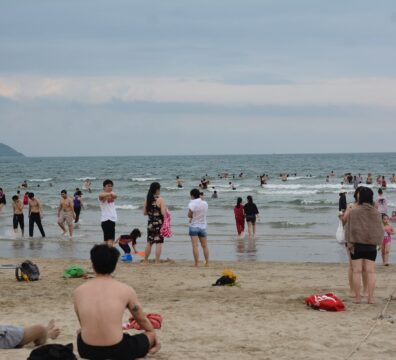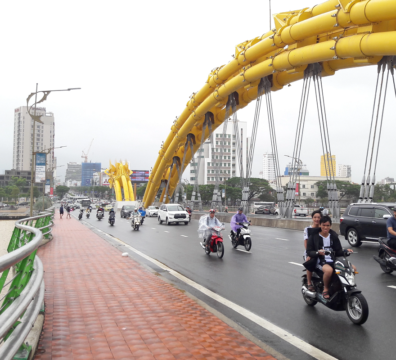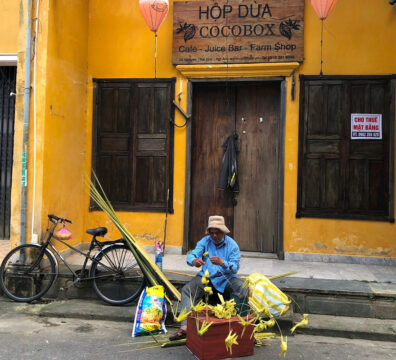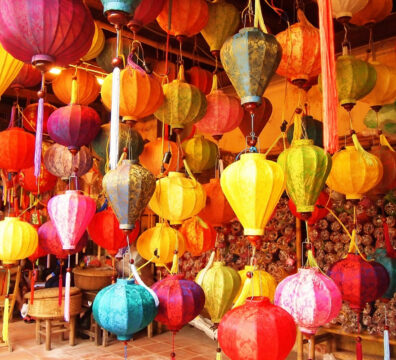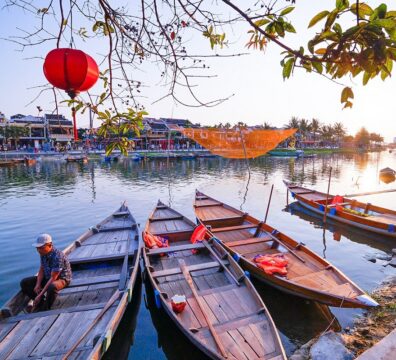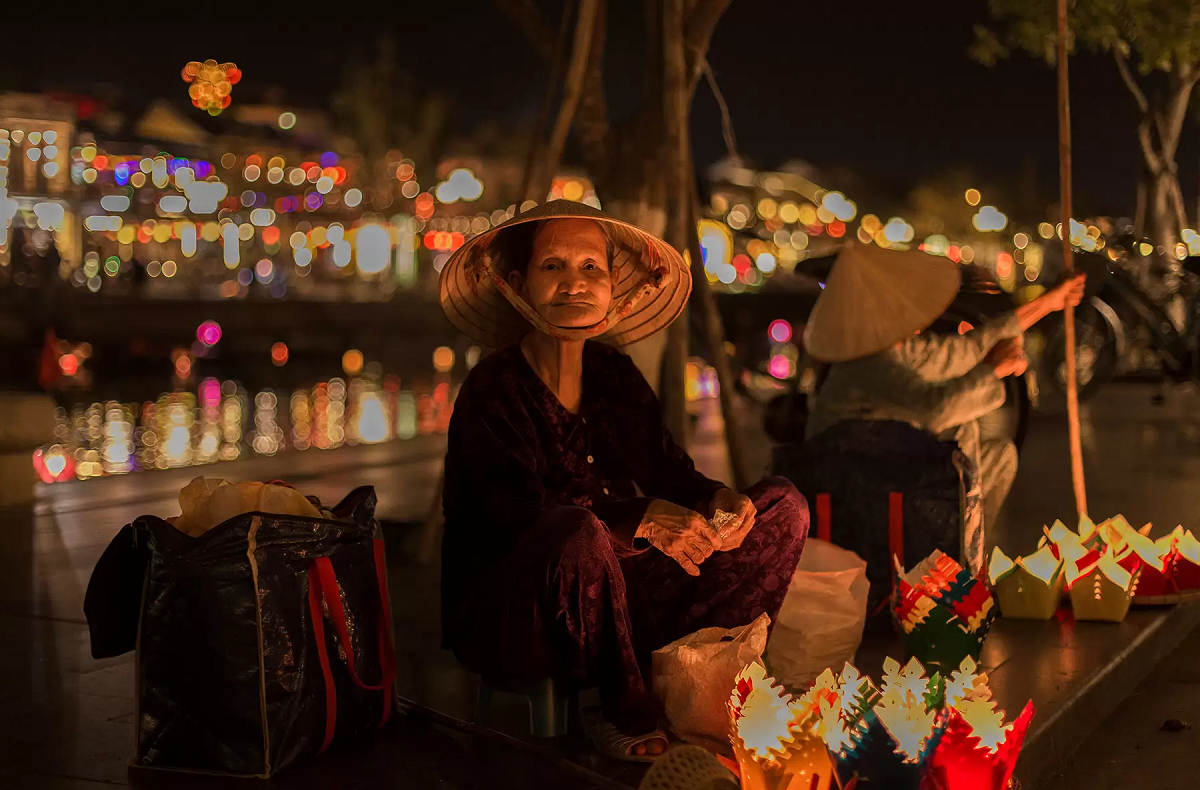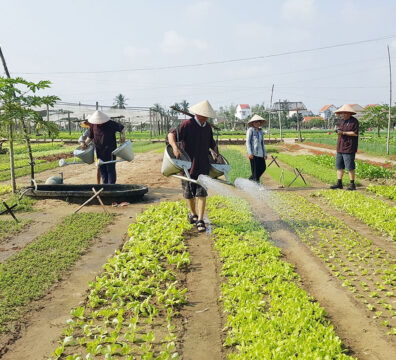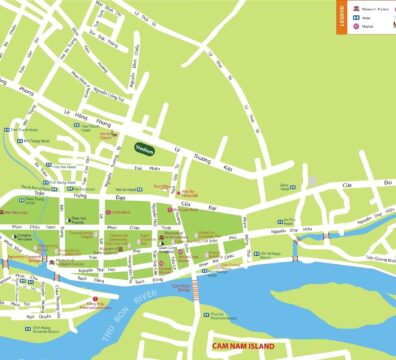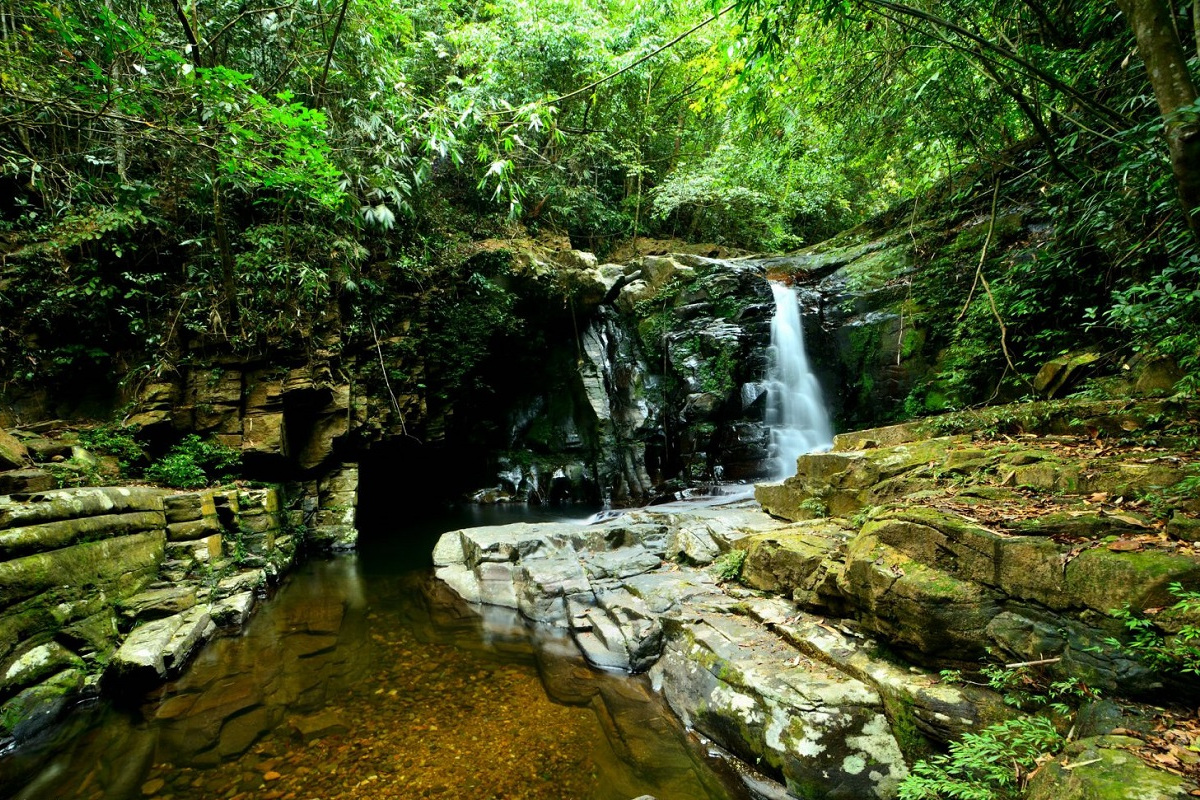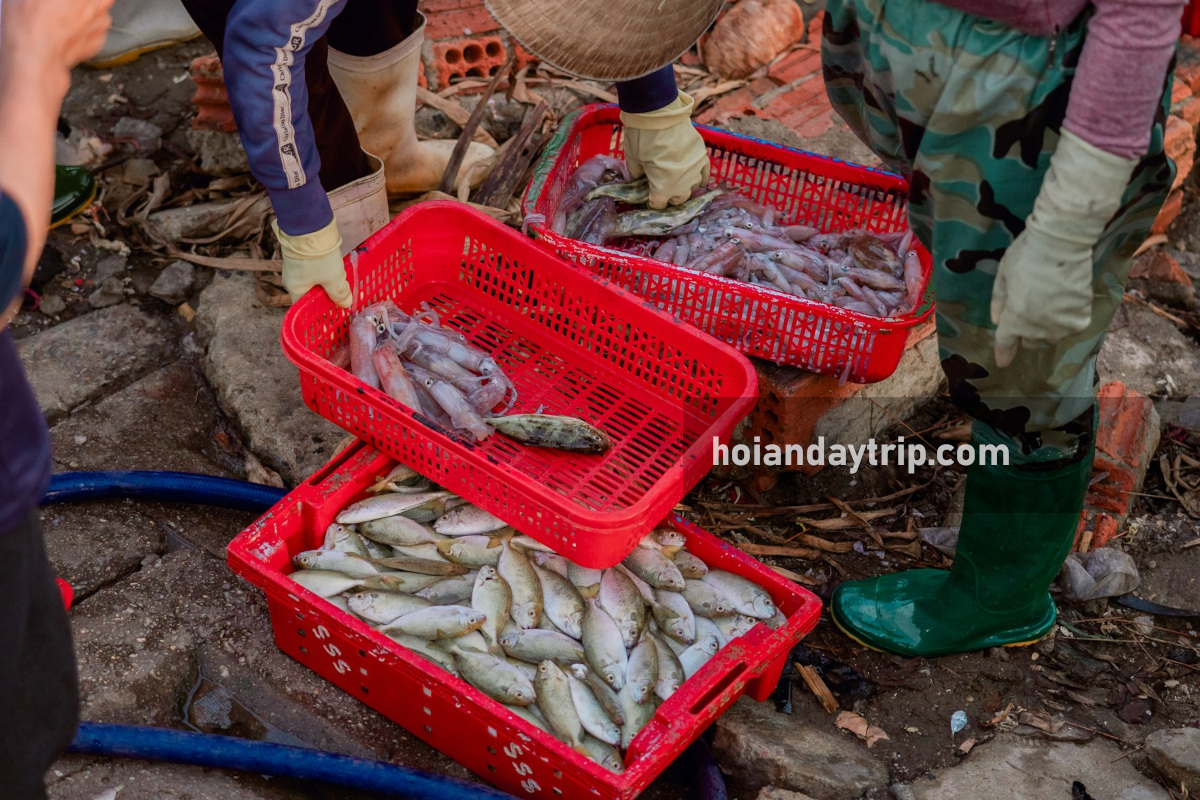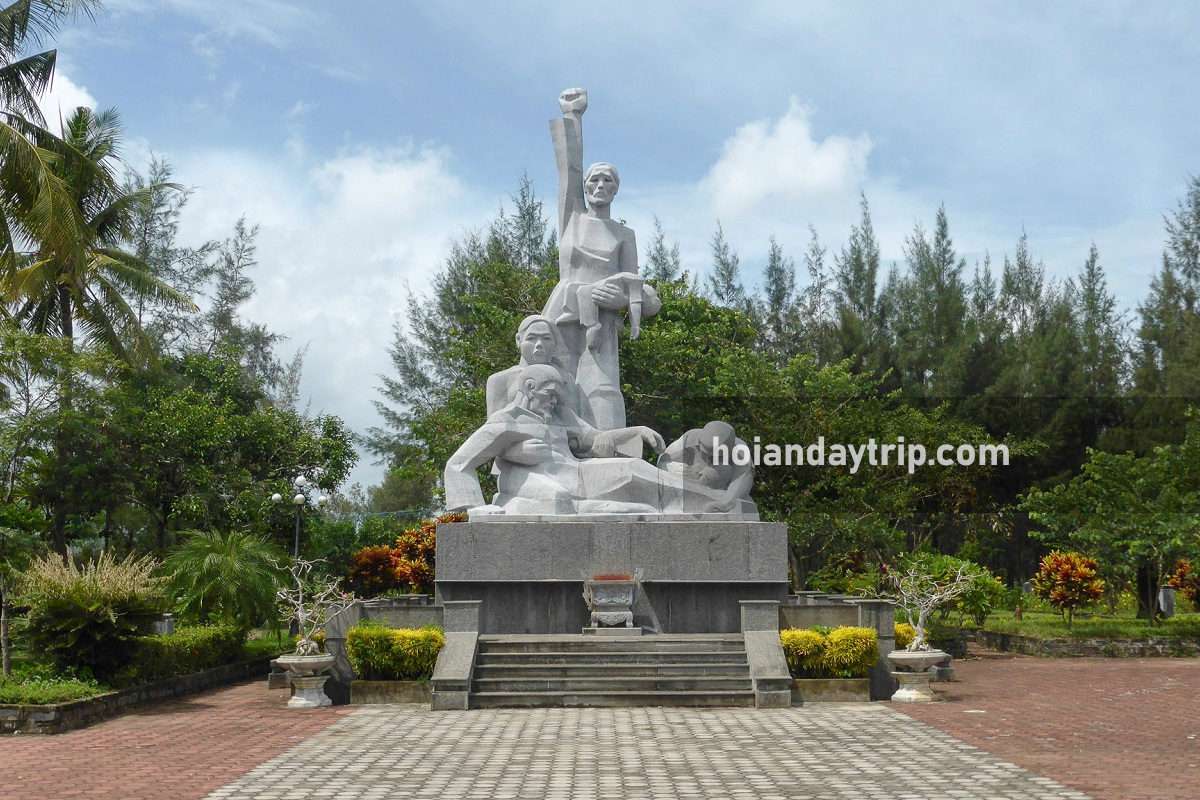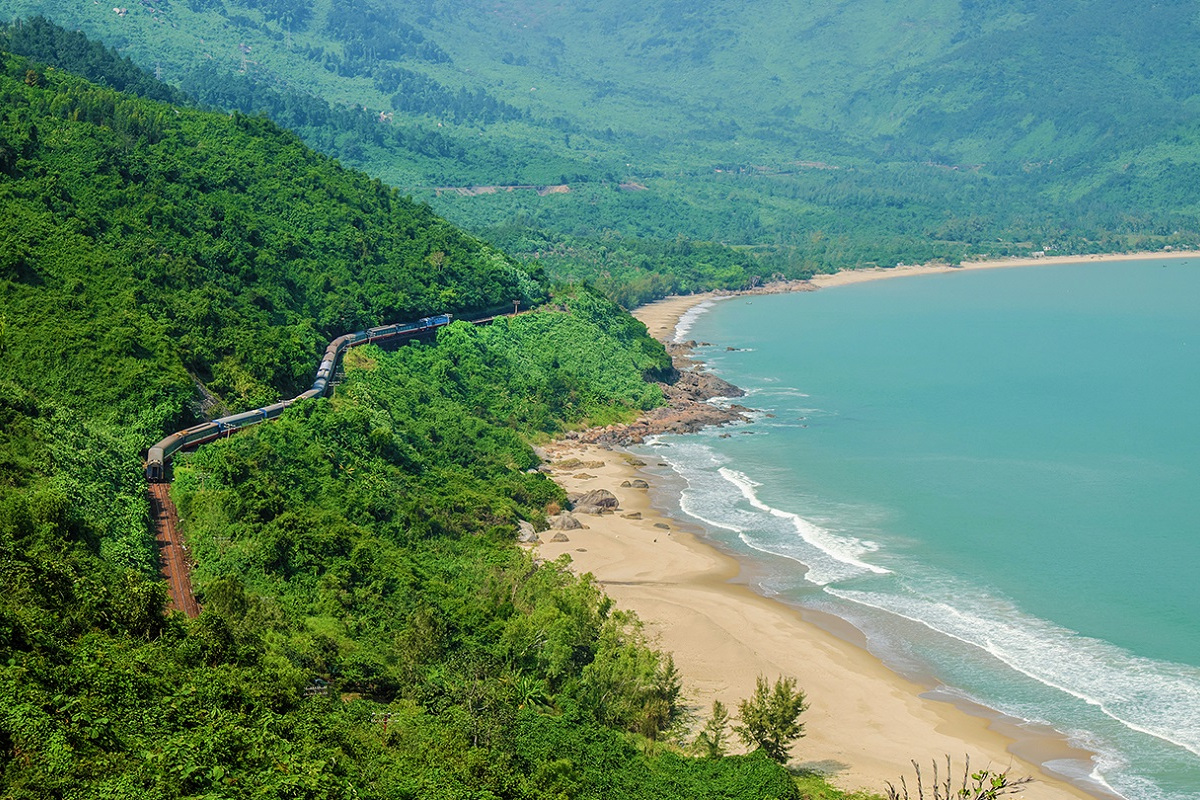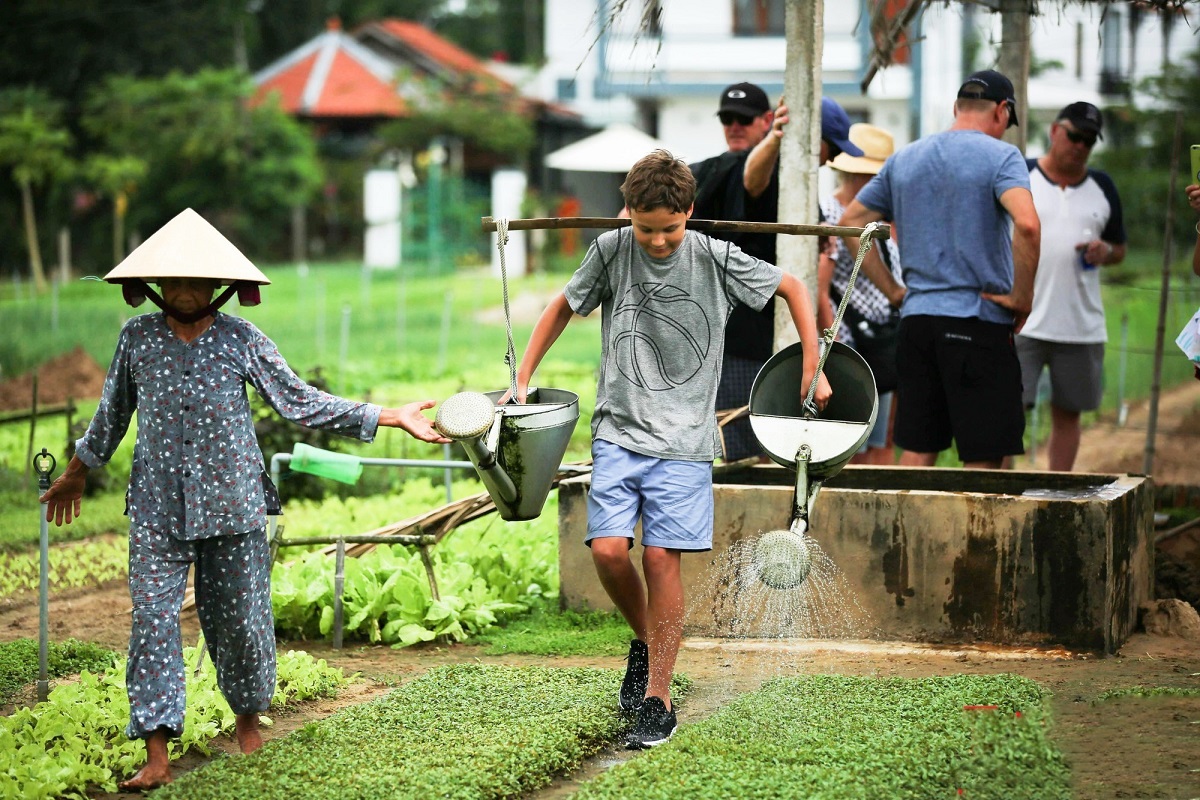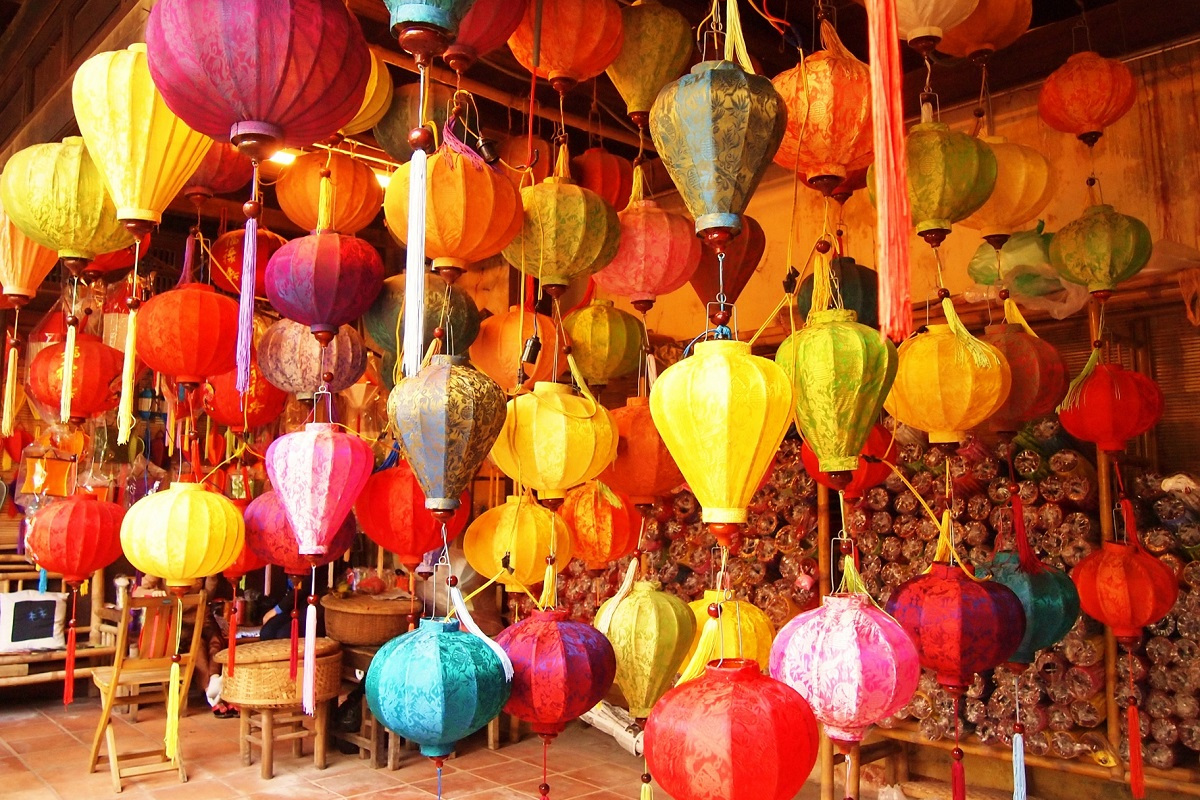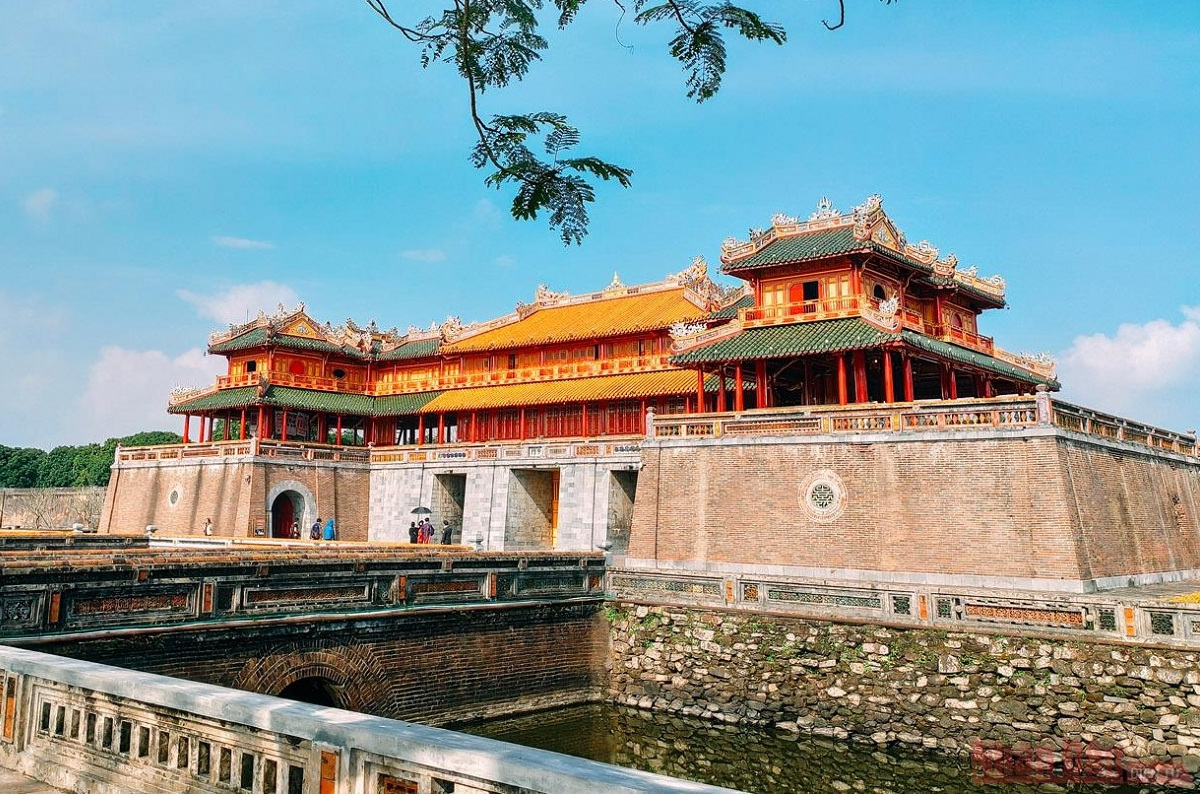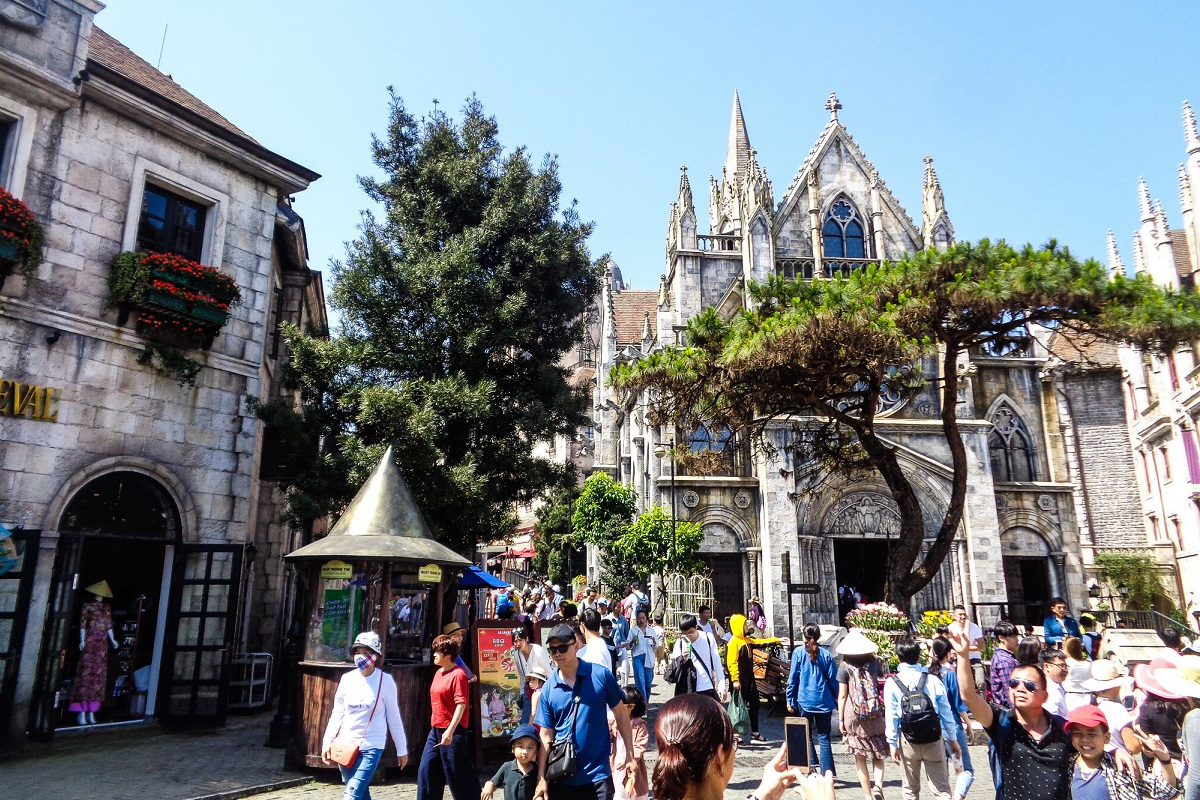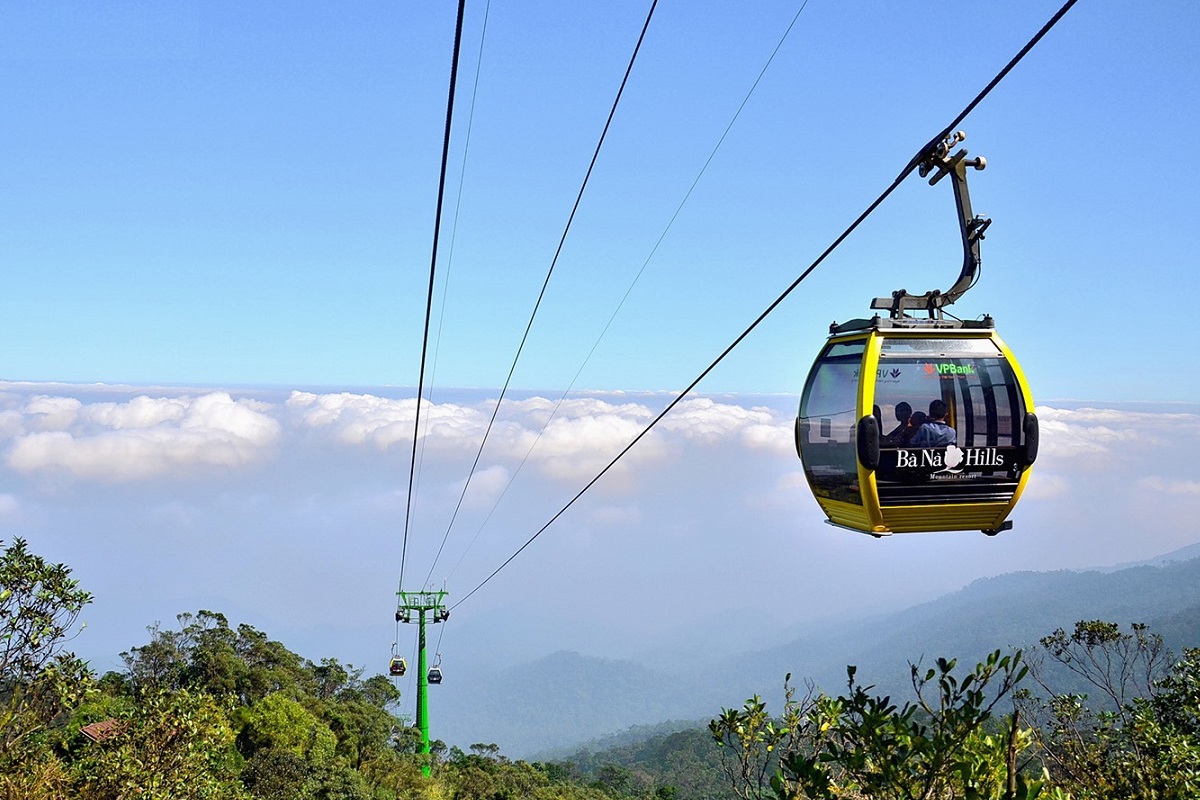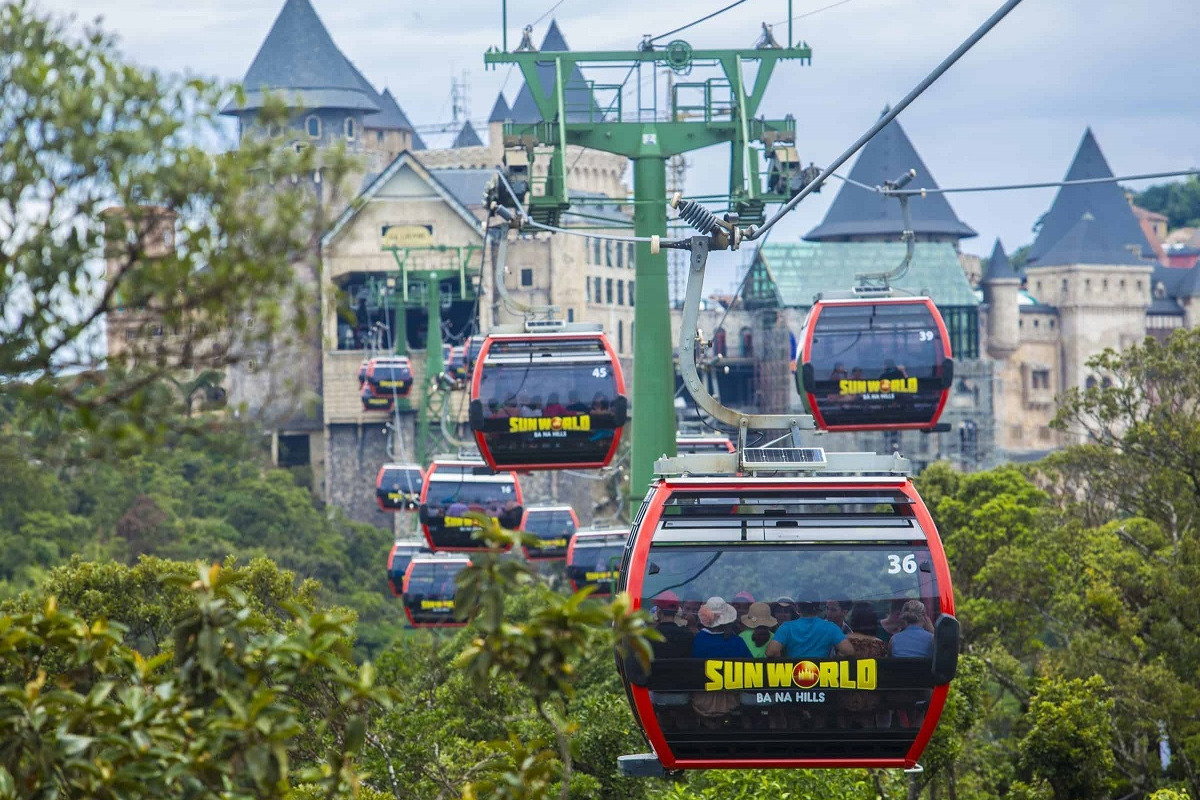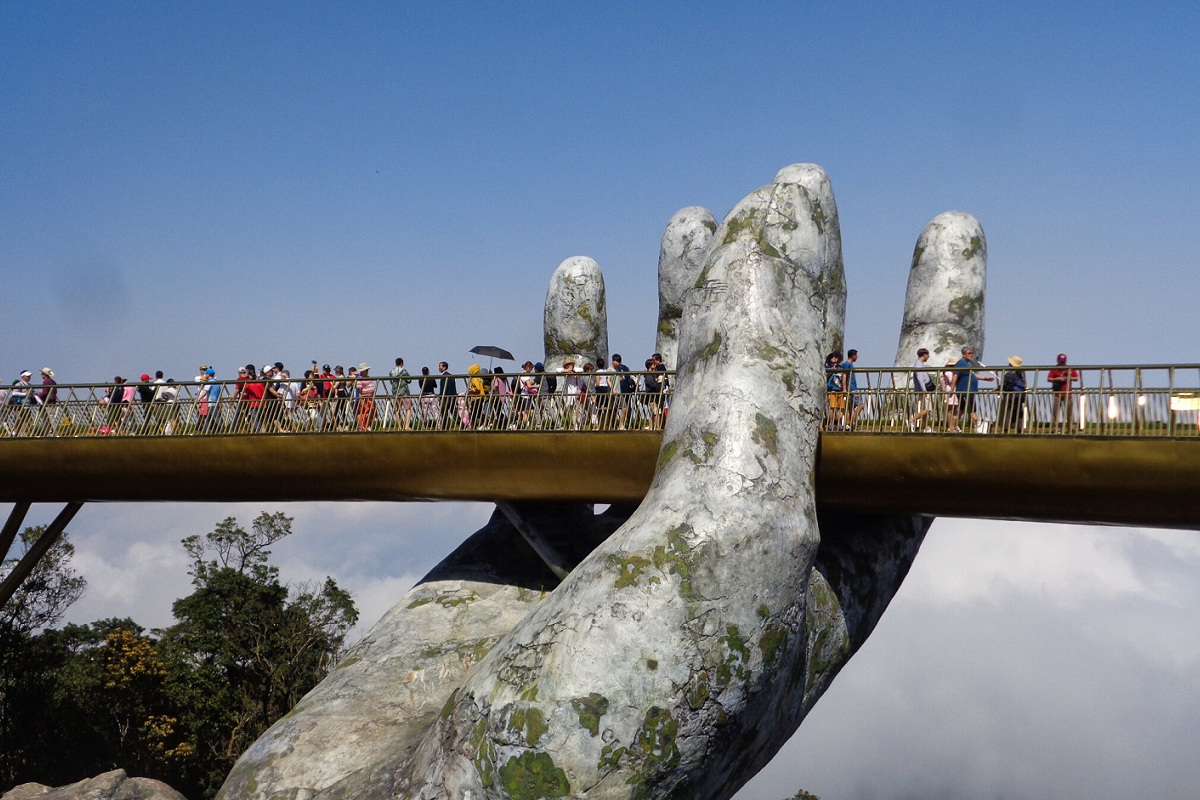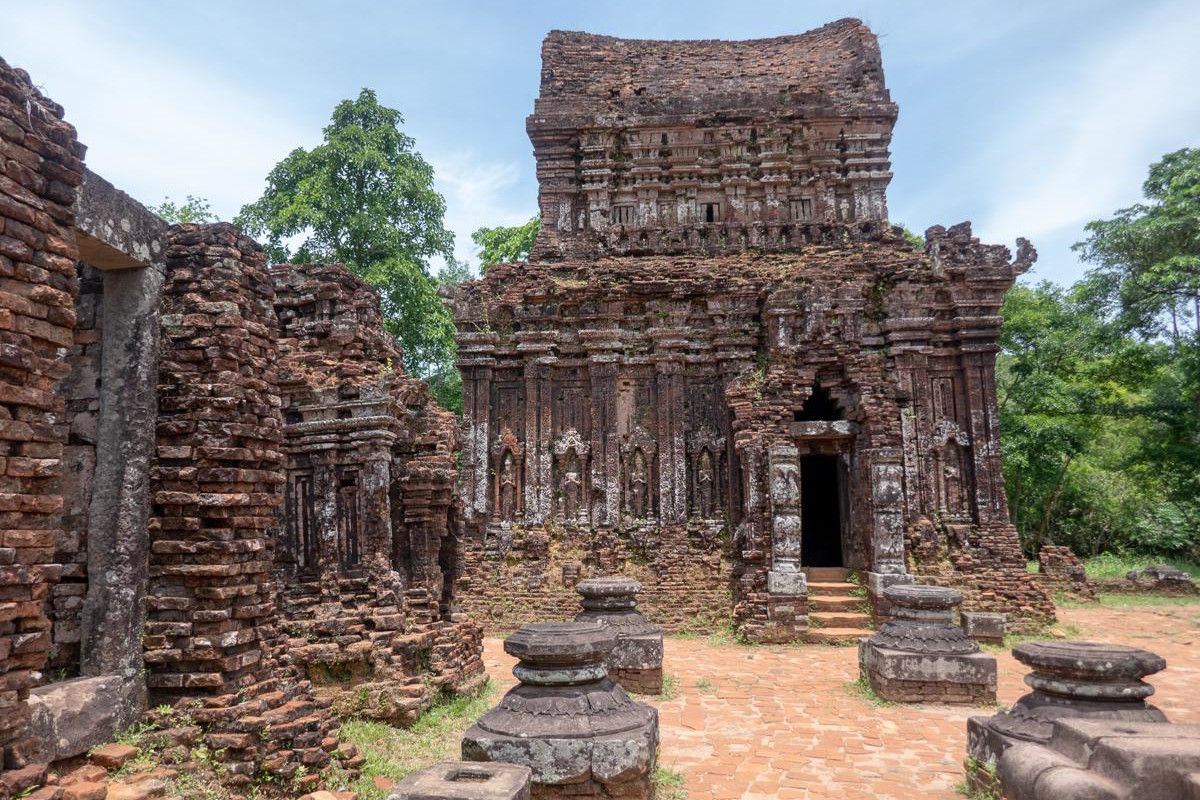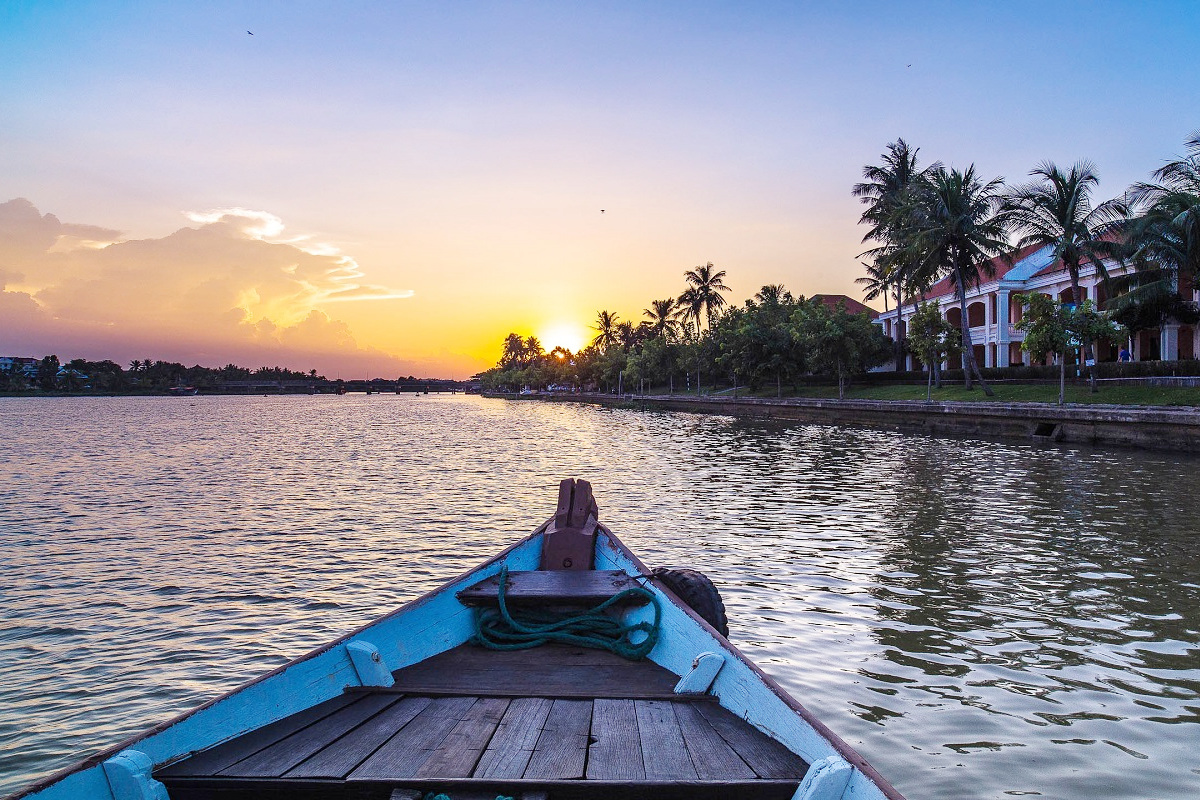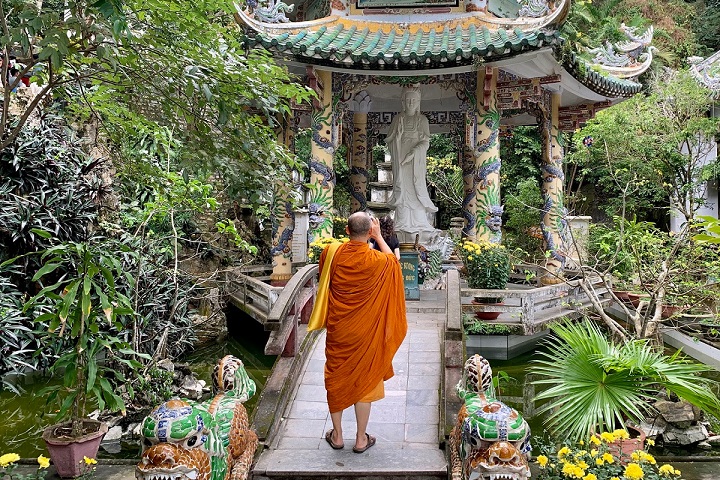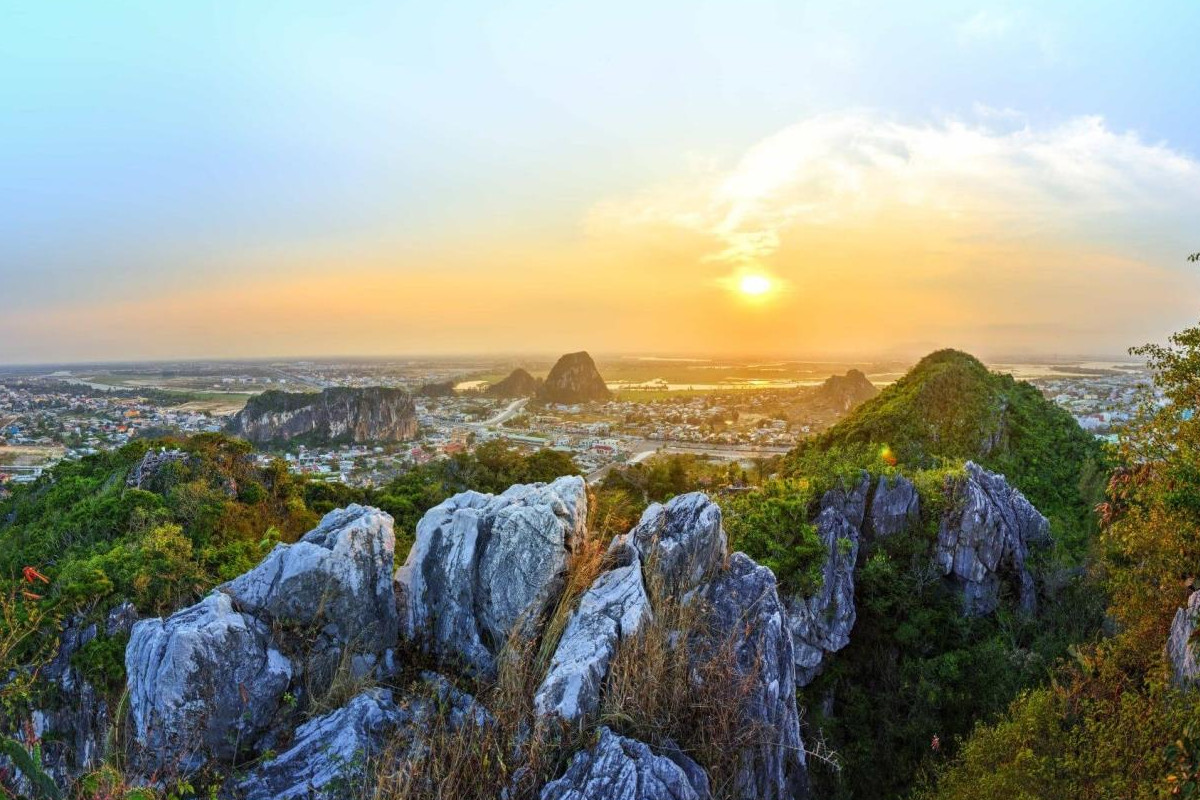In the busiest year, nearly 5,5 millions travellers decided to stay overnight in Hoi An. It’s the largest number that a city in the Central coast of Vietnam ever achieved. Not just thanks to the Unesco title, this lovely destination has so many interests that make people want to stay longer and discover. This article reveals all areas to stay in Hoi An for tourists. A variety of “environments” can be expected to base for a few nights, from central residential blocks, peaceful countryside, graceful beaches to isolated islands (fisherman villages). Each has its own advantages and disadvantages, so the best area is where travellers like most or feel most convenient to follow the itinerary. About the type of accommodation, the city core (Old Town and surroundings) provides all while the countryside and beaches “specialize” in eco-friendly and leisure styles. Homestays where the guests are a part of the host family’s life, are around Hoi An and in the offshore islands.
Read also:
- Guide to Hoi An Monthly Weather
- The Best Time to Visit Hoi An
- 2 Days in Hoi An (Itinerary)
- 3 Days in Hoi An (Itinerary)
- Day Tours from Hoi An
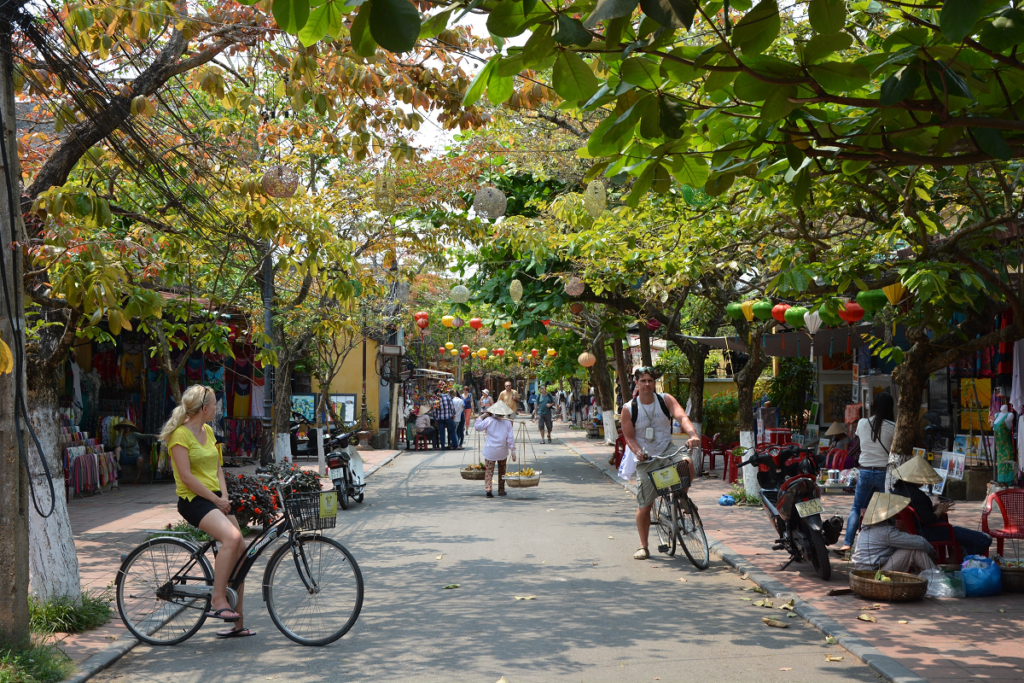
Table of content
- 1 How Many Nights to Stay in Hoi An?
- 2 Da Nang or Hoi An – Reasons to Stay Overnight in Hoi An
- 3 When is the Best Time to Go to Hoi An?
- 4 An Bang Beach
- 5 Cua Dai Beach
- 6 Hoi An Old Town
- 7 Surroundings of Hoi An Old Town
- 8 Tra Que Vegetable Village
- 9 Cam Chau Between Town and Beach
- 10 Cam Thanh Countryside
- 11 Cham Islands
- 12 Where to Stay in Hoi An – Beach or Town?
- 13 Which is the Best Area to Stay in Hoi An?
- 14 Related Posts
- 15 Bach Ma National Park: Hiking, Trekking in Da Nang and Hoi An
- 16 Hoi An Wet Season: What to Do in Hoi An When It Rains?
- 17 Thanh Ha Terracotta Park
- 18 Vinwonders Nam Hoi An Theme Park (formerly Vinpearl Nam Hoi An)
- 19 Am Phu Cave (Hell Cave) – Things to Do in Da Nang
- 20 Hoi An or Hue: Which is Better?
- 21 The Official Hoi An Travel Guide (MUST READ)
- 22 The Hoi An Market (Hoi An Central Market) Complete Guide
- 23 Hoi An Memories Show: The Best of Hoi An Impression Theme Park
- 24 Hoi An Bridge: Famous Bridges in Hoi An
- 25 How to Get From Hoi An to My Son Sanctuary
- 26 Hoi An’s Chinese Assembly Halls and Chinese Temples
- 27 Hoi An Walking Tours: Heritage, Foods, Photography & Locals
- 28 Hoi An Self Guided Walking Tour – Hoi An On Your Own
- 29 How to Visit Golden Bridge Vietnam
- 30 Unique Experiences in Hoi An and Why?
- 31 An Bang Beach: A Guide to Hoi An’s Best Beach
- 32 Experiences in Hoi An: Get Insight Into Hoi An’s Local Culture
- 33 Things to Do in Ba Na Hills Besides Golden Bridge
- 34 Hoi An Nightlife: What to Do in Hoi An At Night?
- 35 Hoi An Countryside: Villages, Rice Fields & Tours
- 36 How to Get to Golden Bridge From Hoi An
- 37 Hoi An Entrance Fee: Old Town, Golden Bridge, My Son, More
- 38 Hoi An Airport: Everything You Need to Know
- 39 Hoi An Lantern Boat Ride on Hoai River
- 40 Hoi An Private Car and Driver
- 41 What to Do in Hoi An Ancient Town
- 42 Da Nang and Hoi An Itinerary for Visitors Staying Overnight in Hoi An
- 43 Hoi An 3 Day Itinerary: A Travel Plan for 3 Days in Hoi An
- 44 Hoi An Free Things to Do: Budget Travel in Hoi An Vietnam
- 45 Hoi An One Day Itinerary: A Travel Plan for One Day in Hoi An
- 46 Hoi An Half-Day Tours: Guide to Half Day Trips From Hoi An
- 47 Hoi An Day Tours: A Guide to Best Day Trips From Hoi An
- 48 Hoi An Beach: A Guide to All Beaches in Hoi An Vietnam
- 49 Hoi An Food Specialties
- 50 How to Get From Hoi An to Da Nang
- 51 Hoi An Cheap Things to Do: All Solo Travelers Need to Know
- 52 Hoi An Best Things To Do: Recommendations from Local Experts
- 53 Hoi An Things to Do: All What Can You Do in Hoi An Vietnam
- 54 Hoi An Things Not to Miss: A Guide to Must Do in Hoi An
- 55 Hoi An or Da Nang: Which is Better for First Time Visitor?
- 56 Hoi An Pottery Village: A Guide to Thanh Ha Pottery Village
- 57 Hoi An Ancient Town Tour
- 58 Hoi An Old Town Ticket: Price, Sellers, Included Sites, More
- 59 My Son Sanctuary Tour
- 60 Hoi An Lanterns: Festival, Making Class, Where to Buy, More
- 61 Hoi An Best Area to Stay: Guide to Where to Stay in Hoi An
- 62 Hoi An Weather by Month: Guide to Hoi An Monthly Weather
- 63 Hoi An River Cruise: Guide to The Best Boat Tour in Hoi An
- 64 Hoi An Old Town Boats: Guide to Boat Rides in Hoi An Town
- 65 Hoi An 2 Day Itinerary: Traveler Guide to 2 Days in Hoi An
- 66 Cham Island Hoi An
- 67 Hoi An Basket Boat Ride
- 68 Hoi An Coconut Village: A Guide to Cam Thanh Coconut Village
- 69 Hoi An Cham Temples: My Son Sanctuary & Quang Nam Temples
- 70 How to Get from Da Nang Airport to Hoi An
- 71 Da Nang to Hoi An: Best Da Nang Airport Transfer and More
- 72 Hoi An Tour Guide: How to Find a Private Tour Guide in Hoi An
- 73 Hoi An Ancient Town Attractions
- 74 Hoi An Old Town Map
- 75 Featured Tours and Experiences
- 75.0.1 Bach Ma National Park Tour from Hue
- 75.0.2 Bach Ma National Park Tour from Da Nang/Hoi An
- 75.0.3 Hoi An Sunrise Fish Market Tour
- 75.0.4 My Lai Massacre Tour
- 75.0.5 Golden Bridge/Ba Na Hills & Hoi An Tour
- 75.0.6 Hoi An Instagram Tour
- 75.0.7 Ky Anh Tunnel & Tam Thanh Mural Village Tour
- 75.0.8 Da Nang to Hue Motorbike Tour with Hai Van Pass & Easy Rider (1 Way)
- 75.0.9 Hue to Da Nang Motorbike Tour with Hai Van Pass & Easy Ride (1 Way)
- 75.0.10 Hue to Hoi An Motorbike Tour with Hai Van Pass & Easy Rider (1 Way)
- 75.0.11 Hoi An to Hue Motorbike Tour with Hai Van Pass & Easy Rider (1 Way)
- 75.0.12 Tra Que Vegetable Village Tour with Cooking Class
- 75.0.13 Ba Na Hills Half Day Tour from Hoi An
- 75.0.14 Marble Mountain & Hoi An Day Tour from Da Nang Port
- 75.0.15 Hue Day Tour from Chan May Port with Lunch
- 75.0.16 Marble Mountain & Hoi An Tour from Chan May Port
- 75.0.17 Ba Na Hills/Golden Bridge Tour from Da Nang Port
- 75.0.18 Ba Na Hills/Golden Bridge Tour from Chan May Port
- 75.0.19 Golden Bridge Private Tour with Ba Na Hills & Lunch
- 75.0.20 Ba Na Hills Afternoon Tour with Golden Hands Bridge
- 75.0.21 Ba Na Hills Private Tour with Golden Hands Bridge
- 75.0.22 Ba Na Hills Half Day Tour with Golden Bridge
- 75.0.23 Ba Na Hills Early Morning Tour to Beat the Crowds
- 75.0.24 Golden Bridge and Ba Na Hills Night Tour
- 75.0.25 Golden Hands Bridge Tour In Sunrise or Sunset (1/2 Day)
- 75.0.26 Cam Kim Island Bicycle Tour From Hoi An
- 75.0.27 Cham Island Tour From Hoi An (Group Tour)
- 75.0.28 Cham Island Tour From Da Nang (Group Tour)
- 75.0.29 Hoi An Vegetarian Food Tour
- 75.0.30 Hoi An Evening Walking Food Tour with Local Foodie
- 75.0.31 Private Hoi An Basket Boat Tour (Shuttle Bus, Bicycle, Bike)
- 75.0.32 Half-day Am Phu Cave Tour (Private)
- 75.0.33 Hoi An Countryside Tour by Electric Car or Bike
- 75.0.34 Da Nang Tour Package From Singapore
- 75.0.35 Hoi An Evening Tour From Da Nang with Lantern Boat Ride
- 75.0.36 Hoi An Walking Food Tour Through Laneways
- 75.0.37 My Son Sanctuary and Hoi An Old Town Tour
- 75.0.38 My Son Day Trip From Hoi An including Marble Mountains and Basket Boat
- 75.0.39 Half Day Hoi An City Tour With River Cruise
- 75.0.40 Son Tra Peninsula Tour with Marble Mountains (Private/Small Group)
- 75.0.41 Hue Day Trip From Hoi An with Hai Van Pass, River Cruise & Lunch
- 75.0.42 Hoi An Ancient Town and Countryside Tour (Bests of Hoi An Tour)
- 75.0.43 Hoi An Tour From Da Nang Airport (Private, Optional Lunch)
- 75.0.44 Hoi An Day Trip From Da Nang (Marble Mountains, Basket Boat, Old Town)
- 75.0.45 Da Nang City Tour From Airport (Private, Optional Lunch)
- 75.0.46 Hoi An City Tour with Lantern Class, Lantern Boat, Night Market & Local Food Sampling
- 75.0.47 Marble Mountains, Basket Boat Ride & Hoi An Old Town Walking Tour
- 75.0.48 Marble Mountains & Golden Bridge/Ba Na Hills Day Tour
- 75.0.49 Marble Mountains & Monkey Mountain Tour (Half-day, Private)
- 75.0.50 Private Golden Bridge Sunrise Tour (Half-day, Optional Lunch)
How Many Nights to Stay in Hoi An?
Number of nights to stay over in Hoi An depends on each traveller, such as his/her itinerary across the country or region, budget, liking, and more. For first timers, 2 nights is the minimum that should book to explore the city. It’s enough to visit the Old Town and historical sites, beaches, countryside and join some featured activities. On the 3rd day, travellers can leave the city in the afternoon and then sleep in Da Nang or Hue or fly to somewhere else. This layover allows you to check out places that may be missed in previous days, even the My Son Sanctuary. We recommend reading the guides for 2 days in Hoi An, and 3 days in Hoi An to easier design the travel plan.
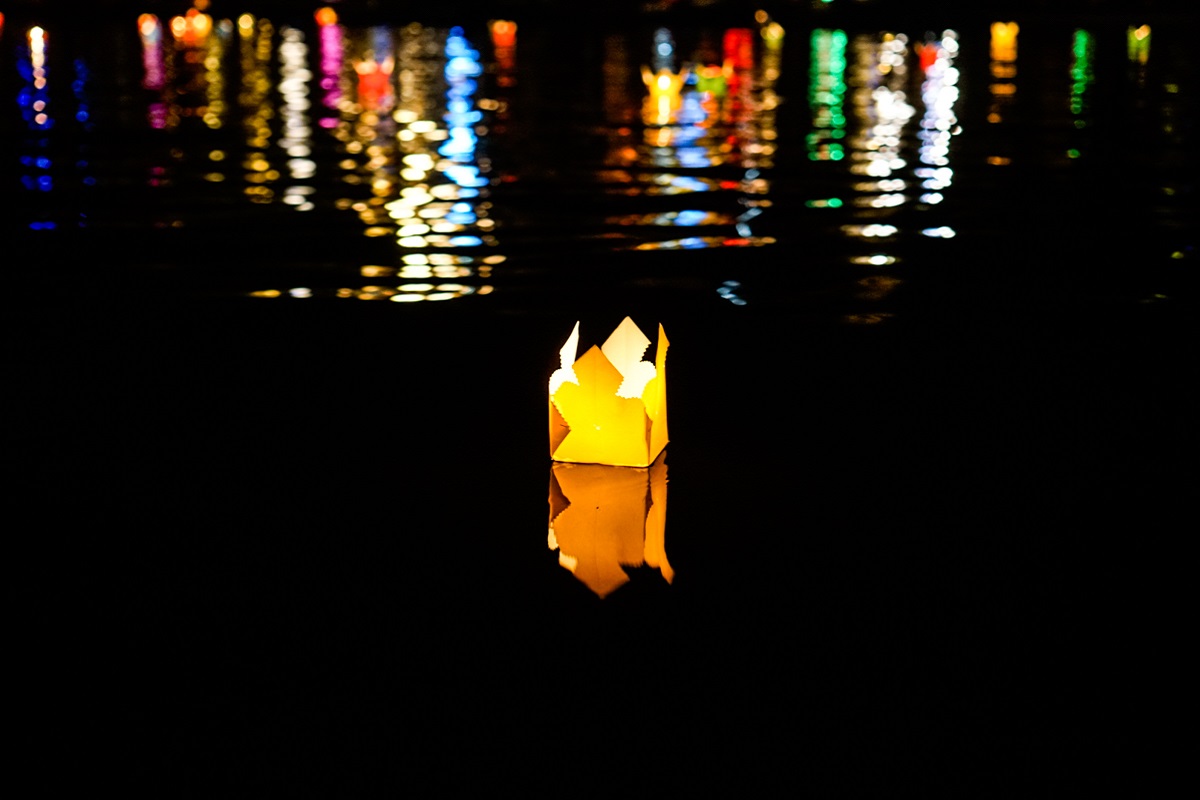
Da Nang or Hoi An – Reasons to Stay Overnight in Hoi An
Although smaller in size and further to the airport, Hoi An owns lots of things that make traveler’s stay memorable. Foremost, this charming city has historical quarters filled by old timber houses, blooming flowers and plentiful tourist places. At night, colorful and fairy lights from millions of lanterns kill every romantic soul. It’s an epic beauty that can’t be found anywhere else. In the full moon (lantern festival), definitely Hoi An is the choice of all travellers. Peaceful countryside and sunny beaches at a close distance, diversity of handicraft traditions and cuisine are other reasons. See more comparisons in our article to Da Nang or Hoi An.
If you have a holiday that is long enough (such as a week), you should spend the night in both Hoi An and Da Nang.

When is the Best Time to Go to Hoi An?
The best time of the year to visit Hoi An is from February to the end of August when it’s still sunny. A beach holiday package and outdoor adventures are fitted to book during it. If want to avoid the heat, shouldn’t plan the trip in the period between May and July, with the highest temperature degrees. If traveling with a budget, mid-January to mid-February isn’t great, because the prices are always higher than usual due to the Vietnamese new year. Late April to early May is also busy by domestic visitors who travel to celebrate the reunification day. Read our guide to Hoi An’s best weather and Hoi An monthly weather to know further details.

An Bang Beach
Quick Introduction of An Bang Beach
An Bang Beach (Bai Bien An Bang) is the best known beach in Hoi An, with major swimming spot in the end of Hai Ba Trung St. During sunny months, travellers can expect sandy expanses to lie on, warm and unpolluted water to swim and many water games to entertain in the water edge. There are so many sun beds to choose from and relax, with bars in a close distance. Under the coconut palms, there are sea-facing restaurants where fresh seafoods are best sellers. In the village, Vietnamese and international restaurants are also a lot, including venues with patrons as expats. See more information in our guide to An Bang Beach.
Pros and Cons
Pros: An Bang is an ideal place to stay for travellers seeking a beach holiday in Hoi An. It has a white sandy beach with sun beds under the palapas, lots of good eating and drinking places. Non-luxury places dominate the village, including homestays, boutique hotels, villas and hostels. That’s varied enough to allow travellers to choose their favourite type(s). Prices are not really expensive, so this fisherman village is friendly for mid-range budget and budget ones.
Restaurants in An Bang are diverse, from beachfront to small lanes. It’s possible to see Vietnamese, western, Asian and fusion cuisines in the menu there. See the bests in our article here. Furthermore, it’s home to one of the largest expat communities in the city. Thanks to that, no difficulties exist to meet up new friends and socialize in any bar or look for something to eat with home flavours. The last advantage of An Bang is its convenient location. No matter where, the coast is just within 5 mins walk. Distance to the Old Town is only 4 kilometers, requiring a short taxi drive or a 15-mins bicycle ride. For romantic souls, sunrise here and the sunset in rice paddies nearby are must to know.
Cons: In high seasons, the beach is crowded, restaurants are packed and accommodations are fully booked. It’s a little uncomfortable. Like the central coast of Vietnam, bad weather in the wet and typhoon season leads to closing of many seafront venues and outdoor activities. The cloudy water with big waves is dangerous to swim in.
An Bang Beach Accommodation
An Bang Beach is a popular destination for swimmers, sunbathers, hungry and thirsty souls. From the waterfront to inner laneways of the village, travellers have lots of choices of places to eat, drink, rejuvenate and stay overnight. Exploring the best lodging options in our guide to An Bang Beach accommodation.
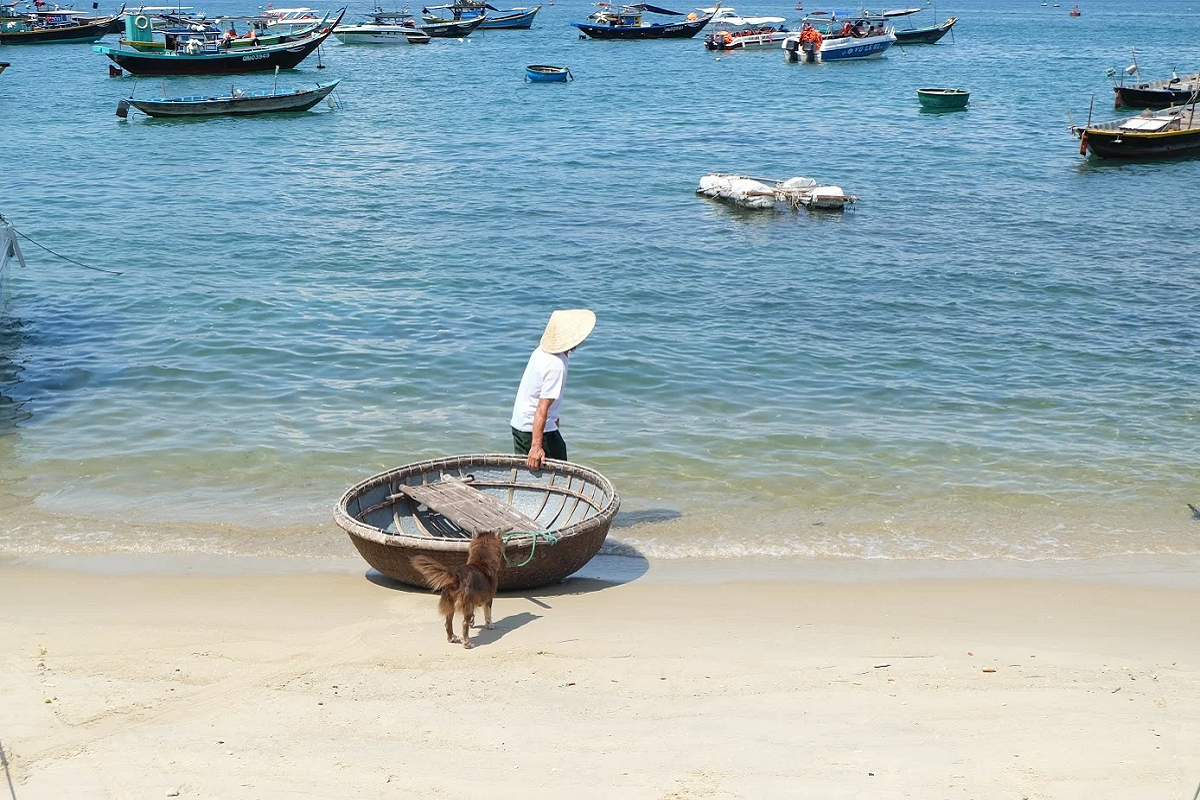
Cua Dai Beach
Quick Introduction of Cua Dai Beach
Cua Dai Beach (Bai Bien Cua Dai) is one of the 2 most famous beaches in Hoi An. It’s sandy, stretching 5 kilometers from the end of An Bang Beach to the estuary of Thu Bon River. Backed by coconut palms and fringed by warm, clear and shallow water in the front, this pretty shore is loved by locals and tourists. The Cham islands around the horizon and a gorgeous sunrise are great additions into the God blessing beauty. Due to recent coastal erosion, some parts of the beach are damaged and protected by sandbags. See all information in our guide to Cua Dai Beach.
Pros and Cons
Pros: Cua Dai Beach has the largest concentration of beachside resorts that provide all-inclusive, luxury, and highly-rated service. Each venue owns a private stretch of sand, with sun lounges and exciting water activities. All year round, the guests can find quiet spaces without crowds in resorts of this area. It takes less than 15 minutes to get to the Old Town from this area. Shuttle bus is available daily to carry for free to go there for strolling and dining. 10 minutes are max to land in Cua Hai Harbour where tours to Cham Island begin. On the other side of the coastal road, there are cheaper options to stay overnight. Most of them are located near public swimming spots, at the end of Cua Dai Rd.
Cons: Cua Dai Beach is affected by typhoons in several months at the end of the year. In the coast, cold water, big waves, winds and no activities definitely can’t make a great beach holiday. If just looking for relaxation, that’s okay because the temperature is cool at that time. Additionally, the public beach is no longer intact due to erosion. Locals still swim or cool off there daily, and vendors still sell local snacks and seafood dishes with cold beer. Yes, it’s nice to visit, sit down, enjoy the chilly breeze and scenic scenery.
Hoi An Resorts on the Beach
Travelers can find the best beach resorts of Hoi An in Cua Dai Beach. All of them are between the coastal road and the sea, providing high-end lodging service and many accommodation options amid lush palms. See the list of top choices for a perfect beach holiday package in our article for Hoi An’s beach resorts.

Hoi An Old Town
Introduction, Pros and Cons
The Old Town definitely is the most central area of Hoi An. The designated area by Unesco is pedestrian and bicycle friendly nearly all the time. Within it, a fun day of exploration is easy to make. There, travellers will see lantern-filled streets, historical places, plenty of tailors, eating and drinking venues, shops, markets. In the evening, uncountable lanterns are lit up, making the town so colorful, lightful and full of romantic vibes. In every full moon, shimmering candle paper lanterns are dropped down the river. See details in our comprehensive guide to Hoi An Old Town.
The first advantage of the Old Town is convenience, because top-rated tourist attractions, restaurants, bars, spas, and more are mostly located in it. Staying overnight in the best-preserved Southest-Asian trade town, travellers have many chances to better know local culture and history. In the early morning, slices of daily life of townies are vivid, perfect to see and photograph. However, disadvantages of the area are limited choice of accommodation, expensive price, and noise from the crowds. In the rainy season, the guests may face floods.
Where to Stay in Hoi An Old Town?
There are only several accommodation options inside the protection zone of Hoi An Old Town. All are travelers’ gateways to feel, see up close the daily life of locals, and visit centuries-old buildings in the melting pot. Find out what they are in our inclusive guide to the town here.

Surroundings of Hoi An Old Town
Introduction, Pros and Cons
Off the walking streets in the Old Town, travellers have plenty of accommodation choices to book. The type is diverse (hotel, resort, villa, homestay, hostel, guesthouse) and the price has a wide range. Most areas are outlined as following below:
– An Hoi Island: on the opposite side of Old Town’s canal. It has a couple of large hotels and resorts with the best riverview in the south, and smaller places in other corners. Taxi and bikes are allowed to access this area all the time, except the Pub Street and Night Market Street at night.
– Cam Pho: the west of Old Town, with accommodations less than 1km. Boutique hotels are also main roads and canals, and inner ways, there are homestays, hostels and villas. This area has the shortest distance to mountainous localities, for example My Son Sanctuary.
– The North: the largest portion of Hoi An central urban area. It provides so many options to choose from, varying in type, price, service and facility qualities. Thanks to being near major roads, getting here and other parts of the city are convenient. In holiday seasons, congestion may occur on roads.
– Cam Nam Island: accessible by the bridge near the Central market. This island also has numerous accommodations to stay overnight, including riverside hotels and resorts. Due to the distance from the city center, the atmosphere here is quieter, especially at night. Hoi An Impression theme park with Hoi An Memory show is in a walking distance from the bulk of them.
– The East: between the Old Town and Cam Chau, another popular tourist area. Again, plenty of hotel options to spend a few nights. Rice paddy view and river view rooms are possibilities. Similar to Cam Chau, only a short ride is needed to get to the countryside.
Hotels in Hoi An City Center
The Old Town and its surroundings is the centre of Hoi An. Many places to stay here are the best of their kind. These are guides that travellers can read, to know top picks and choose for yourself the most fitted options:
- Best Hotels in Hoi An City Center
- Best Boutique Hotels in Hoi An
- Best Hostels in Hoi An
- Villas in Hoi An Vietnam
- Homestay in Hoi An

Tra Que Vegetable Village
This vegetable growing village is between the Old Town and the best beach, two most concentrated tourist areas. Surrounded by waterways, it owns fresh organic gardens, restaurants, historical sites and accommodations. For local people, the green ingredients produced by farmers here have a high quality. Herbs are a must in a heap of Hoi An food specialties, such as cao lau, mi quang or banh mi sandwich. See all you need to know about in our guide to Tra Que Village.
If sleeping overnight in Tra Que village, travellers can enjoy a full-of-serenity stay in an authentic rural environment. Herb gardens and farmers at work, rivers with fishing nets and nearby breezy rice fields with brilliant sunset are what to expect. For photography lovers, that’s all great to catch memorable moments. During the day, there are a couple of activities that are suitable for all family members, like learning how to grow vegetables traditionally, cooking local foods, herb massage, cycling, fishing.

Cam Chau Between Town and Beach
Cam Chau is the area between the city center and the beach, and near the peaceful countryside lands of Hoi An. It’s centrally located, therefore, if staying overnight here, travellers have the convenience of transport to anywhere. Walking, bicycle and motorcycle are all possible, the best individually depending on the liking, travel plan and weather. The middle point of the whole area is Ba Le Market, and it takes around 5 minutes to get from there to the most famous beaches, and the lantern town. Additionally, restaurants and drinking places are also many, serving a variety of cuisines around the globe. Some of the best Vietnamese kitchens in town are aside Tran Nhan Tong St (between two bridges).
Accommodation options are plenty and diverse in type, including hotels, hostels, homestays, villas and guesthouses. So, prices have a wide range too. The best loved place to stay is by or overlooking the rice fields. From the balcony, the guests enjoy cool breezes and a killer sunset daily in the dry months. During the flood season, you should book a hotel on the main road Cua Dai because it’s least inundated. Paddy- and river-side areas are often covered by water.

Cam Thanh Countryside
Cam Thanh is a piece of Hoi An countryside 10 mins drive from the Old town. It is like an oasis because of being surrounded by rivers on four sides. The best known place here is the Coconut Village where travellers like to experience basket boat rides in palm forests. See more information about this activity in our guide here. Touring around villages, to view the rice fields and life of people is another favourite thing to do. In Cua Dai Bridge, sunset and sunset are wonderful to watch from its top.
Many travelers love staying overnight in Cam Thanh (commune). It’s hustle-free and perfect to escape from crowds in the town or the beaches during high seasons. Accommodation options are not plenty, but diverse enough in type to choose from. There are hotels, resorts, villas, homestays, hostels and guesthouses with the bulk close by the rivers. Distance to the town or coast is bicycleable, or requires a short taxi or motorcycle drive. Many low areas of this portion of Hoi An countryside are inundated in the flood season.

Cham Islands
20 minutes by canoe from the mainland, Cham Islands is a well-protected archipelago where 3,000 people have been living. This marine park is famous for high diversity of underwater life, fresh seafoods, and shipwrecks filled by premium porcelains. In 2009, it’s designated to be a Unesco world biosphere reserve. The best time to visit is from February to the end of August yearly. See more information in our travel guide to Cham Islands.
Staying overnight in Cham Island is a nice choice. First of all, travellers can enjoy swimming and sunbathing on the beaches without tourists around. Near the coast, the world of beautiful coral reefs and colorful fishes are among the best in Vietnam to discover. It’s easy to hire a boat for snorkeling, diving and trekking. In the rest of the island, a dramatic shoreline with bird cliffs and seasonal flowers, can’t be missed. The bulk of accommodation options here are homestays where travellers can interact with the owners – fishermans. Before making up your mind to spend a few nights here, always remember to check the weather forecast. Read our guide to Cham island accommodation for further details.

Where to Stay in Hoi An – Beach or Town?
It’s hard to stay at the beach or the town which is better to stay, but it’s easier if travellers know what they want. If you like convenience and have many places with excellent services to choose from, the town definitely is a priority. But in high seasons, crowds and congestion are common to see in this zone. During the summer, the beach may be better to stay at but not perfect anymore in the wet season. If you are seeking friends from your home country to socialize, the beach is home of expat communities and venues run by foreigners. The oceanfront has breezy restaurant-bars with a tasty seafood menu and long beverage lists. For dining and entertainment at night, the Old Town is a hub of top-rated venues. Read our guides to Old Town and An Bang beach or Hoi An beach, to know more and decide by your own reasons.

Which is the Best Area to Stay in Hoi An?
The best area to stay in Hoi An depends on personal requirements, location (convenience), price, season and itinerary. The Old Town and its surroundings is the heart of the city. So, definitely travellers don’t need to make many efforts to get to the best attractions, restaurants, bars, shops, some activities, festivals and performances. Walking is feasible, so they can save money. With a little further distance, it’s easy to move with a bicycle that is free in every hotel. This area is the choice of those who don’t have a long holiday. Beaches and countryside are not far from the city core, making the travel time also short. On the coast, travellers have more luxury options to choose from, and of course, the sunny beach is closer. A hotel in the countryside is suitable for an escape from crowds and noise. During the flood season (October to December), dry areas are the best.

Related Posts
Bach Ma National Park: Hiking, Trekking in Da Nang and Hoi An
Two best places for trekking and hiking in and near Da Nang are Son Tra mountain (peninsula) and Bach Ma national park. Which one is better is actually personal because these
Hoi An Wet Season: What to Do in Hoi An When It Rains?
No beach, no pool, no outdoor adventures? What to do in Hoi An when it rains? This is a very popular question from travelers who come to Vietnam in the
Thanh Ha Terracotta Park
Between 15th and 19th centuries, Hoi An was one of major stopovers for sailing merchants to trade in Southeast Asia. Meanwhile, craftspeople in its Thanh Ha village produce high-quality pottery
Vinwonders Nam Hoi An Theme Park (formerly Vinpearl Nam Hoi An)
In addition to historical and cultural attractions, nowadays Hoi An also has a couple of amusement parks to entertain. Definitely, they’re ideal places for families with children and groups of
Am Phu Cave (Hell Cave) – Things to Do in Da Nang
Although in the Marble mountains – the most visited attraction in Da Nang, travelers often miss Am Phu cave. One of reasons is that it’s mentioned much online and not
Hoi An or Hue: Which is Better?
Both Hoi An and Hue cities are in the middle of Vietnam, and they’re not far from each other (about 130 km). Therefore, for those who travel from north to
The Official Hoi An Travel Guide (MUST READ)
By the estuary of Thu Bon river, Hoi An is one of the best places to visit in Vietnam. This Vietnamese town is a package for travelers – a pretty
The Hoi An Market (Hoi An Central Market) Complete Guide
The Hoi An Market is the first market in Hoi An ever. Over centuries, it’s still the largest market in town although the town has a much bigger size than
Hoi An Memories Show: The Best of Hoi An Impression Theme Park
The Hoi An Memories Show is a famous series of outdoor performances in Hoi An at the present time. Thanks to its exceptional production and great cultural stories, it becomes
Hoi An Bridge: Famous Bridges in Hoi An
Hoi An has many bridges because it’s located at the confluence of 3 rivers: Thu Bon river, De Vong river and Truong Giang “Long river”. The distributaries of these rivers
How to Get From Hoi An to My Son Sanctuary
My Son sanctuary is one of the most popular places to visit for tourists staying overnight in Hoi An, especially those who spend many days there. It’s known for a
Hoi An’s Chinese Assembly Halls and Chinese Temples
Chinese people migrated to Hoi An from the early 17th century. Today, Chinese communities as a whole are the second most important piece to form the town’s unique culture. The foremost
Hoi An Walking Tours: Heritage, Foods, Photography & Locals
Strolling around heritage quarters with a local guide is the activity that so many travelers love to do in Hoi An. It enriches their time in this lovely town. Firstly,
Hoi An Self Guided Walking Tour – Hoi An On Your Own
Hoi An old town is friendly for pedestrians, especially during the time that motorized vehicles (scooters, cars, etc) are prohibited to move around its heritage quarters. That is safe for
How to Visit Golden Bridge Vietnam
The Golden Hand Bridge of Ba Na hills today is a dream place to visit for many travelers. Since it opened in June 2018, millions of people have set their
Unique Experiences in Hoi An and Why?
Today, travelers seek more experiences in the destination they go to. They want to have a deeper understanding about the culture of local people and interact with them. No other
An Bang Beach: A Guide to Hoi An’s Best Beach
An Bang beach now becomes a popular tourist attraction in Hoi An. It may be the best known and most convenient to reach from the town’s centre. Not only tourists,
Experiences in Hoi An: Get Insight Into Hoi An’s Local Culture
As the most unique Vietnamese town, Hoi An is definitely worth visiting. Here, visitors have many things to do and experiences for their holiday time. Everyone knows that it has
Things to Do in Ba Na Hills Besides Golden Bridge
According to local authorities, 50% of visitors coming to Da Nang and Hoi An visit the Ba Na hills. In other words, that is nearly 10 millions of people. This
Hoi An Nightlife: What to Do in Hoi An At Night?
After dark, Hoi An becomes exceptionally spectacular. If planning to stay overnight or visiting this ancient heritage town, at least travelers know that it’s “decorated” by so many colorful lanterns.
Hoi An Countryside: Villages, Rice Fields & Tours
By the coast, Hoi An is at the confluence of 3 rivers: Thu Bon river, Truong Giang river and De Vong river. This economically strategic location has supported trading activities
How to Get to Golden Bridge From Hoi An
There are many travelers visiting the Golden bridge from Hoi An. Both the bridge and the town today are must-see places in the region, so staying overnight in the town
Hoi An Entrance Fee: Old Town, Golden Bridge, My Son, More
Are you planning to visit Hoi An? And you don’t know how much cash you need to prepare for visiting places? This article lists tourist attractions in Hoi An and
Hoi An Airport: Everything You Need to Know
Hoi An is a famous tourist city in Vietnam. It’s 800 kilometers away from Hanoi, the capital of Vietnam and nearly 1,000 kilometers from Ho Chi Minh city, the biggest
Hoi An Lantern Boat Ride on Hoai River
A lantern boat ride is a thing to do that visitors must do today in Hoi An. For many centuries, locals have taken it on the Hoai river by the
Hoi An Private Car and Driver
Hoi An is one of the most popular tourist destinations in Vietnam. In the busiest year, it attracts about 9 millions visitors who come to enjoy its charming beauty, rich
What to Do in Hoi An Ancient Town
Hoi An Ancient Town is a must see, not only thanks to its world heritage title, but also to its vintage urban landscape, lots of attractions and activities. In the
Da Nang and Hoi An Itinerary for Visitors Staying Overnight in Hoi An
Da Nang and Hoi An are twin cities in the heart of Central Vietnam. Both are popular tourist destinations for either domestic or international visitors, and share many similarities. Due
Hoi An 3 Day Itinerary: A Travel Plan for 3 Days in Hoi An
3 days are a perfect duration to stay overnight in Hoi An and explore captivating places in and around it. Especially for those who travel from city to city or
Hoi An Free Things to Do: Budget Travel in Hoi An Vietnam
Travelers should know free things to do in Hoi An, to save the budget for this wonderful city and by that, can stay longer to explore. From old town, countryside
Hoi An One Day Itinerary: A Travel Plan for One Day in Hoi An
From a backwater town in the 1990s, Hoi An today is one of leading tourist destinations across Vietnam. In a recent year, it attracted 8,5 millions of overnight visitors and
Hoi An Half-Day Tours: Guide to Half Day Trips From Hoi An
Top attractions near Hoi An require a couple of hours or half a day, to get there and visit around. The reason is that all have many things to see,
Hoi An Day Tours: A Guide to Best Day Trips From Hoi An
Near Hoi An, there are many fantastic places making travelers can’t stay in the room and have to go out to explore. Appeal Golden bridge – the new world wonder,
Hoi An Beach: A Guide to All Beaches in Hoi An Vietnam
Not only an old town, Hoi An has beaches as well! That are sandy, edged by tropical water and lined by palm forests. Travelers don’t need to wait or move
Hoi An Food Specialties
Hoi An is a melting pot where people from different parts of Vietnam and countries in the world have gathered and exchanged their cultures. As a result, this town has
How to Get From Hoi An to Da Nang
Da Nang is the neighbouring city of Hoi An. It's the capital of Central Vietnam and has the most important (busiest) transport hubs of the region, such as airport, train
Hoi An Cheap Things to Do: All Solo Travelers Need to Know
Knowing free and cheap things to do in the city where travelers are going to visit, is helpful. First of all, they can save and, thanks to that, can stretch
Hoi An Best Things To Do: Recommendations from Local Experts
It is no coincidence that Hoi An is in the list of must-visit places once in the lifetime of many travelers. Located by a river, it’s borned to welcome people
Hoi An Things to Do: All What Can You Do in Hoi An Vietnam
Hoi An is in the bucket list of most travellers who plan to visit the Central part of Vietnam. It’s a lovely old and small town located downstream of a
Hoi An Things Not to Miss: A Guide to Must Do in Hoi An
In fact, there are so many things to do in Hoi An, one of the 10 best cities in Asia by Travel + Leisure in 2021. It has a lantern-filled
Hoi An or Da Nang: Which is Better for First Time Visitor?
Da Nang and Hoi An are located in Central Vietnam, with a distance of roughly 30 km. To the north, Da Nang is the capital city of the region, with
Hoi An Pottery Village: A Guide to Thanh Ha Pottery Village
Hoi An used to be a bustling, prosperous trade port during past centuries, before its role was replaced by Da Nang. Merchants from many countries on different continents came here
Hoi An Ancient Town Tour
Hoi An Ancient Town is a Unesco world heritage site by the mouth of the Thu Bon River. It has grid-plan streets filled by silk lanterns and bougainvillea flowers that
Hoi An Old Town Ticket: Price, Sellers, Included Sites, More
As an attraction including attractions, Hoi An Old Town requires an entrance ticket to tourists who come from other parts of Vietnam and the world. It raises funds for preservation of
My Son Sanctuary Tour
My Son Sanctuary is a Unesco world heritage site, attracting 450,000 visitors in recent years. It’s the best remains left by the fallen Champa Kingdom which ruled a part of
Hoi An Lanterns: Festival, Making Class, Where to Buy, More
Lanterns are the signature of Hoi An Old Town, the 3rd Unesco world heritage site in Vietnam. Especially at night, these traditional handicraft objects are lit up and make the town
Hoi An Best Area to Stay: Guide to Where to Stay in Hoi An
In the busiest year, nearly 5,5 millions travellers decided to stay overnight in Hoi An. It’s the largest number that a city in the Central coast of Vietnam ever achieved.
Hoi An Weather by Month: Guide to Hoi An Monthly Weather
Hoi An won the title “Asia’s leading cultural destination” recently in a reputable global travel award. It’s a pretty riverine-coastal town with an ancient root, surrounded by peaceful pieces of
Hoi An River Cruise: Guide to The Best Boat Tour in Hoi An
Hoi An town is by the left bank of the Thu Bon River, and by that, it draws plenty of merchants by sailing boat to visit and trade. Its golden
Hoi An Old Town Boats: Guide to Boat Rides in Hoi An Town
Hoi An town sits by the left bank of the Thu Bon River, the largest and most important waterway in mother Quang Nam province. It’s also near the mouth of
Hoi An 2 Day Itinerary: Traveler Guide to 2 Days in Hoi An
2 days are enough to know the highlights in Hoi An, a famous tourist destination in Central Vietnam. And for those who travel from city to city, 48 hours are
Cham Island Hoi An
The purple islands seen from An Bang or Cua Dai beaches are the Cham Islands. It’s one of the kind in the region where God bless it with fabulous beautiful
Hoi An Basket Boat Ride
Nowhere else outside of Hoi An Coconut Village, travelers can find a basket boat ride across the immense palm forests. It’s an experience that allows the passengers to know better
Hoi An Coconut Village: A Guide to Cam Thanh Coconut Village
Hoi An Coconut Village boasts of the most interlaced waterway system in the city. Four rivers encircle it and are connected together with smaller canals. Thanks to fertile alluvia and
Hoi An Cham Temples: My Son Sanctuary & Quang Nam Temples
Cham people settled in Hoi An before the Vietnamese arrived and handed it over in 14th century. Influenced by Indian culture, they called the land “Amaravati”, similar name to a
How to Get from Da Nang Airport to Hoi An
Located in the city of the same name, Da Nang airport is the nearest airport to Hoi An. So, if travelers want to see an extremely-colorful Lantern festival or try
Da Nang to Hoi An: Best Da Nang Airport Transfer and More
If traveling to Hoi An by air, train and cruise ship, visitors will come to Da Nang first and then have a transfer. The largest city of Central Vietnam holds
Hoi An Tour Guide: How to Find a Private Tour Guide in Hoi An
Most tour packages in Hoi An cover “ a guide”. He or she may be the first and closest local to the visitors, who lead the group to enjoy the
Hoi An Ancient Town Attractions
Spreading over an area of 30 hectares, Hoi An Old Town owns more than 1,100 timber buildings varying in function or type. In the oldest street, the Japanese bridge spans
Hoi An Old Town Map
There are so many things to see, do, eat and sleep in Hoi An Old Town, so the visitors often are confused while planning and exploring. Starting the research from
